Mesolithic Age In Donegal Ireland
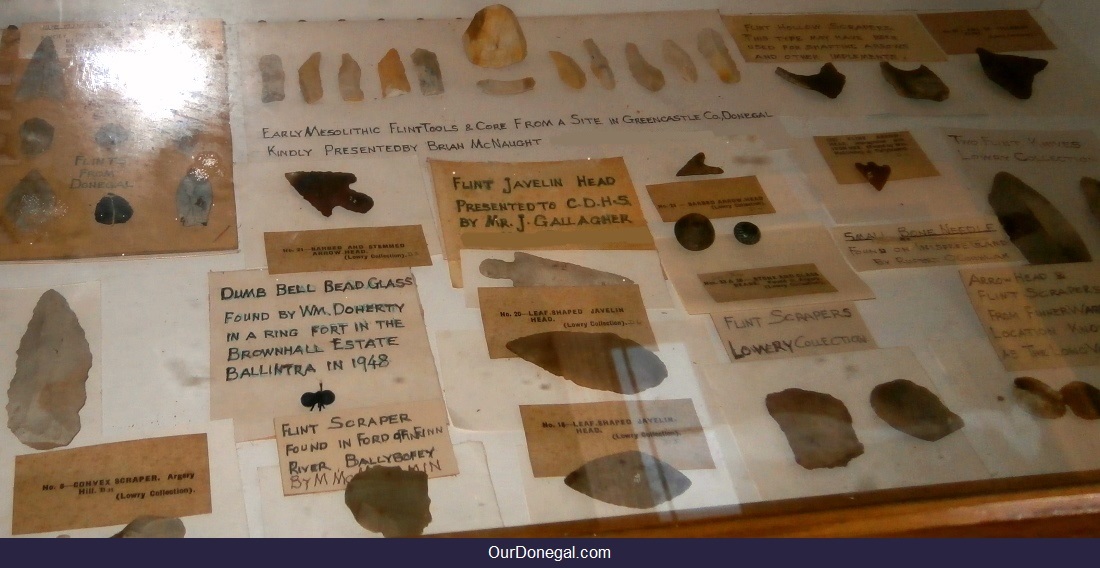 Mesolithic Age and other Stone Age artefacts from Donegal
Mesolithic Age and other Stone Age artefacts from DonegalWho Lived In Donegal Around 10,000 Years Ago?
Overview Of Mesolithic Age Communities: How They Arrived, Lifestyle, Tools They Made Soon After The Ice Age
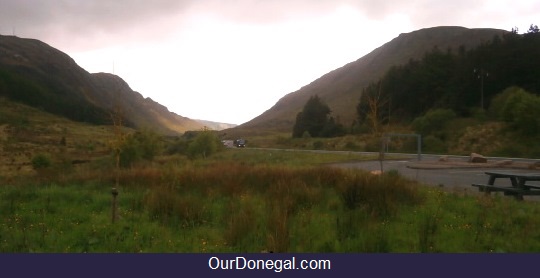 Barnesmore Gap in South Donegal was formed during the Ice Age
Barnesmore Gap in South Donegal was formed during the Ice AgeAncient artifacts found in County Donegal, Ireland, have led archaeologists to conclude that humans lived in the county as far back as the Mesolithic Age. That is, the Middle Stone Age - the pre history period that started soon after the Ice Age, and preceded the Neolithic Era.
The Ice Age in Donegal had ended by approximately 8,000 BC - 10,000 years ago, according to Geologists.
By the time that great glacial thaw had occurred, Ireland was already colonized by vegetation, wildlife such as the giant elk, as well as the first known human arrivals. The human population had reached several thousands.
Evidence Of The Mesolithic Age In Donegal
The past existence of Mesolithic (Middle Stone Age) settlements in
Donegal is confirmed by the discovery of a variety of ancient
microlithic artifacts (small stone tools) at several locations in the
county. For example...
Mesolithic microliths that precede 6,000 BC have been discovered near Castlefinn in East Donegal.
And an excavation of a Late Mesolithic Age site yielded a trove of microlithic debitage. That is, small pieces of flint chippings discarded in the making of Stone Age tools. Geologists concluded that a tool production industry had existed at the site, and that the tools were created for the purpose of trading with neighboring communities. The artifacts were discovered at Dunaff Bay on the Inishowen peninsula in Northeast Donegal.
Tools Made From Stone
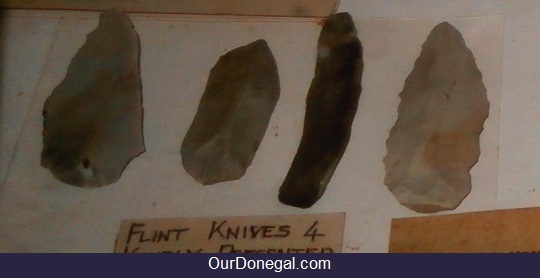 Flint microliths found in Donegal
Flint microliths found in DonegalDonegal's earliest humans fashioned arrowheads and sharp blades out of flint or quartz.
These Middle Stone Age implements were needed for hunting wild animals and preparing them for cooking.
Plus they were useful in the removing of skins for use as clothing and shelter.
The tools also
helped defend against attack by wolves and other predators from the dense
forests.
How Donegal's Earliest-Known Residents Arrived
Donegal's earliest-known settlers had journeyed here either by boat, or by crossing a possible natural 'land bridge' via Britain. It is possible that they arrived by sea, river, and/or land, crossing Ireland from the east or southeast.
Their Way Of Life
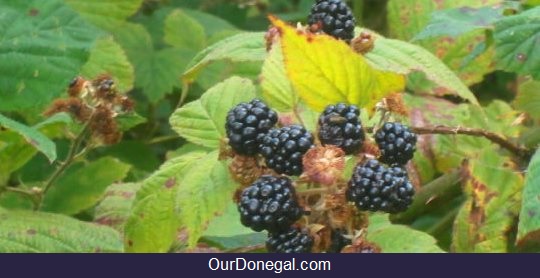 Wild blackberries formed part of the Mesolithic diet
Wild blackberries formed part of the Mesolithic dietIt is known that the primitive peoples of this era had a preference for coastal locations. They also favored lake shores as well as the banks of larger rivers. Rivers facilitated transportation and provided natural travel routes through the lush vegetation.
Mesolithic people were hunter-gatherers. They ate well living on such culinary delicacies as wild boar, various species of wildfowl, seafood and a variety of fruit, nuts and berries. They knew how to create and use fire, and cooked their food outdoors.
Primitive Mesolithic Dwellings
These early residents also built and lived in
primitive dwellings. The dwellings were made from a combination of native
materials that may have included wood, earth, and animal hide. Evidence
of this has been unearthed at the Mountsandel archaeological site across the border in Northern Ireland.
The Mountsandel site is approximately sixty kilometers east of County Donegal,
near the river Bann.
Where To View Stone Age Artifacts In Donegal
You can view the Stone Age artifacts pictured above in the County Donegal Historical Society's museum room at the Franciscan Friary in Rossnowlagh.
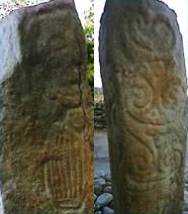
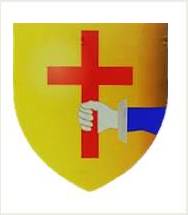
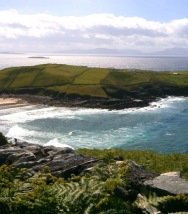


New! Facebook Comments